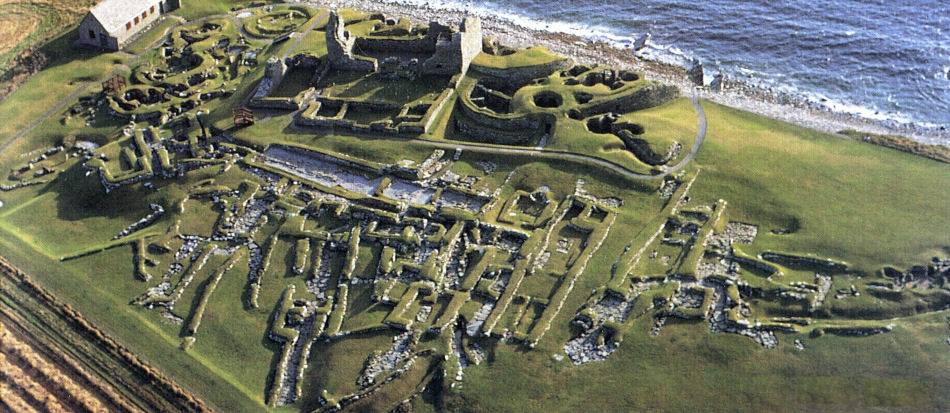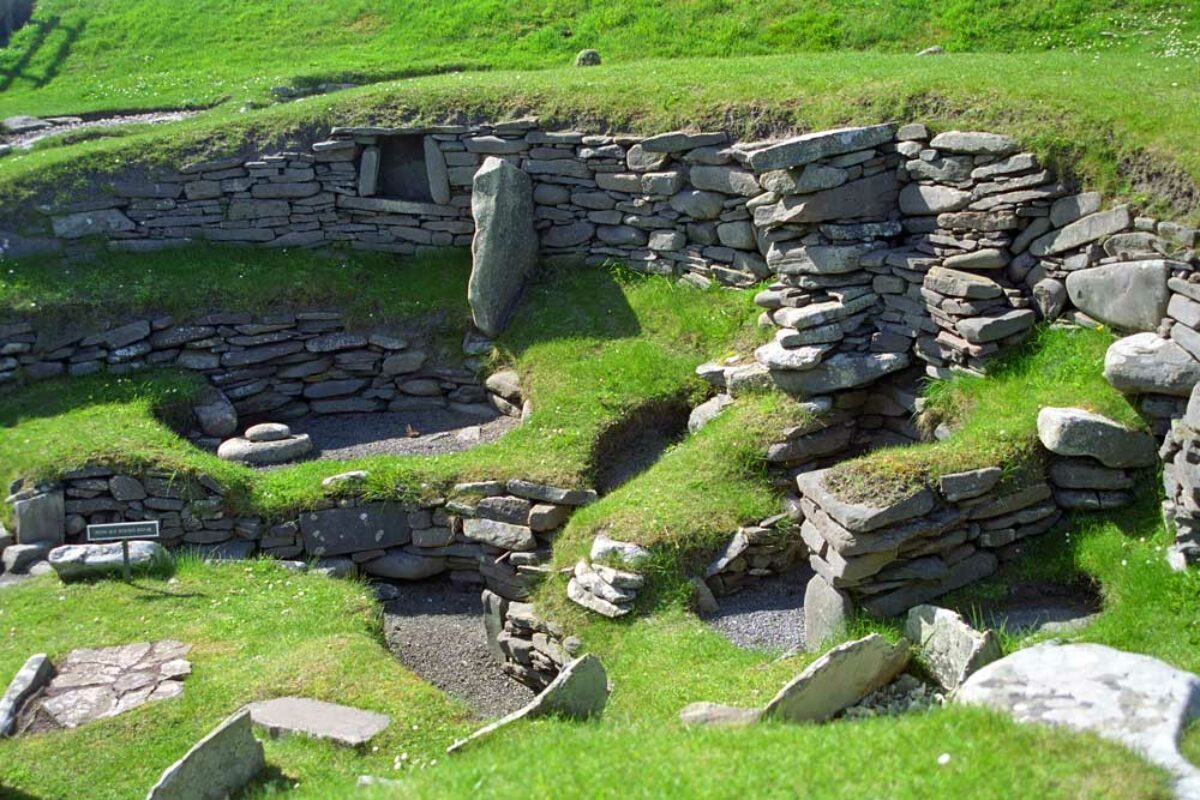Jarlshof, located at the southern tip of Shetland, stands as a remarkable archaeological site that encapsulates over 5,000 years of human history. From its Neolithic origins to the medieval era, the site reveals a series of structures that chronicle the evolution of Shetland’s inhabitants, offering invaluable insights into life on the island. The diverse range of archaeological layers—from Bronze Age smithies to Viking longhouses and medieval buildings—demonstrates the continuous human settlement of Shetland and its critical role in broader trade networks across prehistoric Europe and the North Atlantic.

A Continuously Occupied Site
The standout feature of Jarlshof is its uninterrupted occupation. The settlement, beginning in the Neolithic era around 2,500 BC, continued through the Bronze Age, Iron Age, Viking period, and into the medieval period. Early settlers are believed to have arrived by skin boats from northern Scotland, eventually establishing a vital link in transatlantic trade routes. The site’s continuity of settlement offers a unique lens through which to study the gradual evolution of Shetland’s architectural and cultural practices.

Notably, the Bronze Age saw local crafting of bronze items with materials imported from as far as Cornwall, suggesting Shetland’s role in wide-reaching trade networks. This continuity of life on the island speaks not only to the resourcefulness of its people but also to Shetland’s strategic importance in ancient European trade systems.
Diverse Layers of History
Excavations at Jarlshof, initiated in the 1920s, have uncovered a fascinating array of artifacts that showcase the technological and cultural developments of the region’s inhabitants. Among the most notable finds are Neolithic jewelry pieces, such as an eagle’s talon and a decorative bone plaque, which highlight early artistic expressions. The Bronze Age revealed smithies and evidence of the Shetland pony, a species still integral to the island’s culture today

The Viking longhouse remains at Jarlshof provide a deeper understanding of the island’s role during the Viking Age, both as a hub for daily life and as part of broader Norse trade routes. These trade routes extended far beyond Shetland, connecting the island with distant regions and further cementing its importance as a cultural and economic crossroads in the North Atlantic.
Unfinished Exploration
Despite its significance, Jarlshof’s full history remains unfinished, as excavation ceased in the early 1950s without additional radiocarbon dating to fill in gaps. As a result, many aspects of Shetland’s long occupation at Jarlshof remain a mystery, leaving room for future exploration and discovery.

A Lasting Legacy
Today, Jarlshof continues to serve as one of Shetland’s most significant archaeological sites, offering a snapshot of the island’s rich history and enduring cultural identity. The site’s layers of settlement, from prehistoric to medieval times, highlight the resilience and adaptability of Shetland’s inhabitants over millennia. Jarlshof not only connects us to the distant past but also underscores the island’s historical role in shaping the broader cultural and trade networks of ancient Europe and the North Atlantic.

